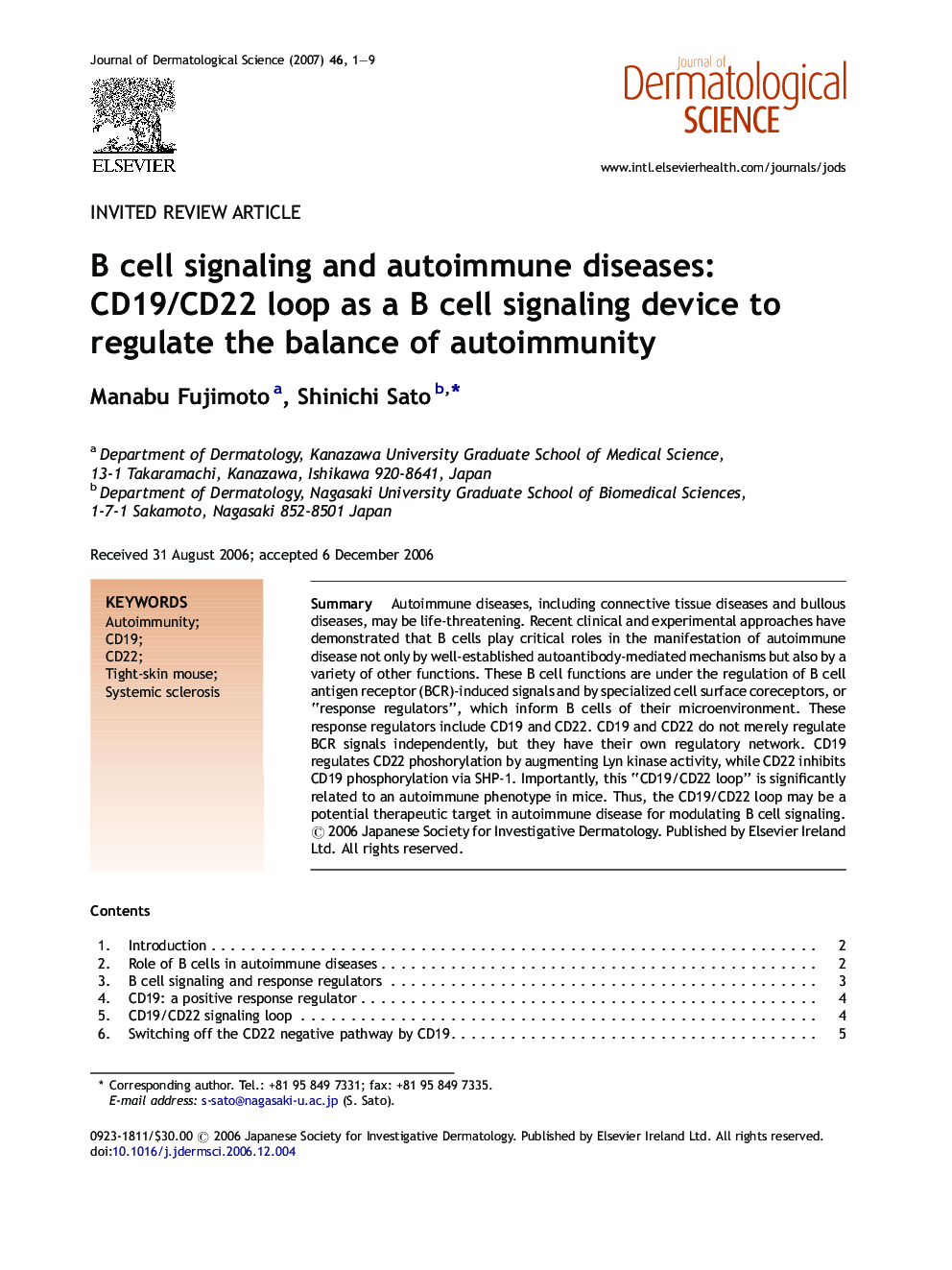| Article ID | Journal | Published Year | Pages | File Type |
|---|---|---|---|---|
| 3214454 | Journal of Dermatological Science | 2007 | 9 Pages |
SummaryAutoimmune diseases, including connective tissue diseases and bullous diseases, may be life-threatening. Recent clinical and experimental approaches have demonstrated that B cells play critical roles in the manifestation of autoimmune disease not only by well-established autoantibody-mediated mechanisms but also by a variety of other functions. These B cell functions are under the regulation of B cell antigen receptor (BCR)-induced signals and by specialized cell surface coreceptors, or “response regulators”, which inform B cells of their microenvironment. These response regulators include CD19 and CD22. CD19 and CD22 do not merely regulate BCR signals independently, but they have their own regulatory network. CD19 regulates CD22 phoshorylation by augmenting Lyn kinase activity, while CD22 inhibits CD19 phosphorylation via SHP-1. Importantly, this “CD19/CD22 loop” is significantly related to an autoimmune phenotype in mice. Thus, the CD19/CD22 loop may be a potential therapeutic target in autoimmune disease for modulating B cell signaling.
